difficult images : gender identification page 1

Difficult Images: Gender Identification Page 1
Many of the images in this web site have been acquired with out the important details on who the people are and where and when the photographs were taken. Often we are forced to deduce the date from the style rather than use the date to follow style trends. Some of you have forwarded information and asked if I have any insights. In the case of children in dresses it is often difficult to determine gender.
Here are some difficult images I have encountered. Please let me know if you have any insights or thoughts. Your thoughts will be added by the different images. Hopefully out of the discussion will cone some useful insights.
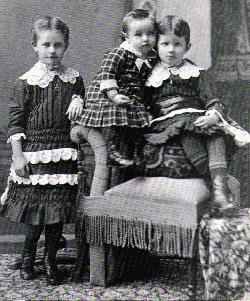
Figure 1.--This undated portrait looks like three sisters. Certainly the child on the left is a girl. The middle child could be a boy. The child on the right has a boy's face. The center hair part and short hair suggests a boy, especially as the hair has been cut away from the ears. Note that the girl on the left has a center part, but while her hair is short it has not been cut away from the ears. One clue is that both older children wear identical lockets. This suggests to me that both are girls. The picture was taken in Lima, New York. I don't have the date, but I would guess about 1890.
|
Reader comment: I disagree with you, in my uneducated opinion. I think the middle child is a girl and the two on the outside are boys. The inside child's hair is not parted. She may even have bangs on her forehead. The inside child's collar is smaller than the outside children's. The large, square collars seem more like boys' styles than the dainty little collar on the central child. The boy/girl on the right (viewers' right) has a little bag hanging off the outside arm. It looks like a very full and rather heavy bag. Could it have marbles in it?
The outside child (standing) on the viewers' left has a boyish look. The middle child could be a boy because of the plaid material of its outfit. -- DS
Reader comment: I believe the children are froim the left a girl, boy, girl. The young child in the middle looks to have a side part. During the Civil War years girls had middle parts and boys side parts. Boys did wear long hair and sausage curls. I have a photo of one. -- BM
HBC reassessment: HBC believes that for the reasons stated in the image text box that the child on the left is a girl. The middle child is too young to tell, but as DS suggests, the plaid dress does suggest a boy and as BM suggests the side part also sugests boy. The collar is small, but HBC would not describe it as dainty. The difficult child to assess is the child on the right. For the reasons stated in the image box, HBC believes the child is a boy. He certainly looks like a boy. The fact that he wears a dress and collar similar to his sister on the far left, does leave HBC somewhat unsure as does the center hair part. But some brothers and sisters were dressed a like, so it is quite possible even when the baby is dressed differently that a boy and girl could be dressed alike. The locket the child is wearing does not signify a girl, bith young boys and girls wore them. HBC has no idea what is in the bag that the child is holdingm but it does not look to me very boyish. The center hair part does suggest a girl, especially if the portrait had been taken in the 1860s. The center part in the 1890s, however, is less definative.
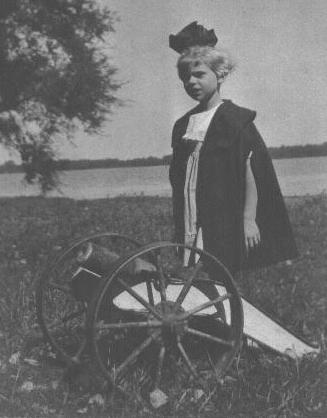
Figure 2.--I found this image a little confusing. Given the fact that it is an American photograph, the child almost certainly is a girl, although the photograph by the cannon seems a bit strange. Note the large hair bow and smocked collar.
|
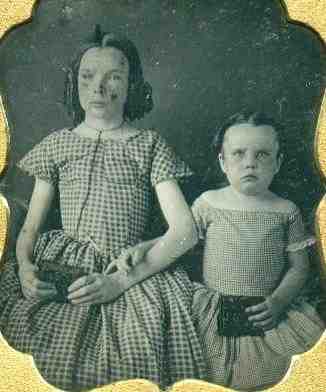
Figure 3.--This is a difficult image to assess as there are so few clues. I think the photograph was probably taken in the 1850s. The two children are probably girls, although I am not positive about the younger child. They cerainly look like boys. So as not to confuse you, both children are not holding clutch purses but probably leather encased photographs. A reader writes, "This is a photo from about 1855. It looks like the older child is wearing a corset. And yes some mother's placed their child in a corset. It
looks like the dress is slightly pointed in the front which means the 1850s. In the 1860s the waist was straight across." -- BM
|
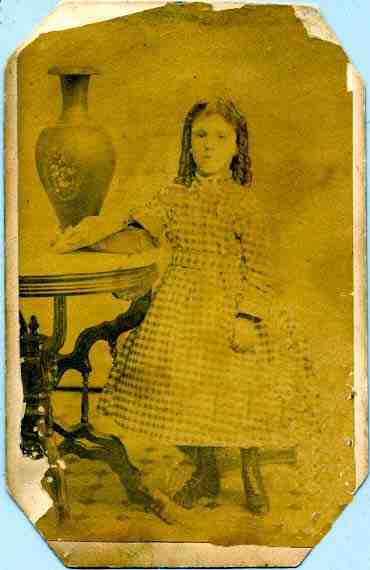
Figure 4.--This is a particularly difficult image to access. I have no information to go along with it, but would guess it is an American image and dates to about the 1850s or perhaps the 1860s. There are virtually no clues to give any insight on the gender of the child. The dress is very simple which is sometimes a clue that the child may be a boy. Boys wore ringlet curls in the 1880s, although usually not boys this old. Ringlet curls in the 1860s-70s probably mean a girl. The child is probably a girl, but the face did rather look like a boy to me. A HBC reader writes, "This is definitely a 1860s portrait. It looks like a girl to me because the hair is parted in the middle." -- BM
|
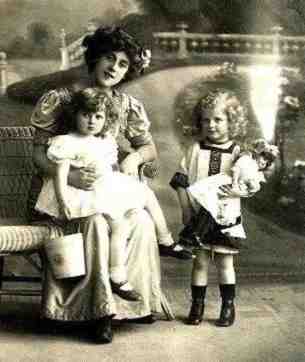
Figure 5.--I think this is a French image which I would date in the 1900s. I'm not sure though as to the gender of the children. I think the child on the right may be a boy, although dolls as props usually (but not always) mean a girl.
|
HBC comment: I think this is a French image which I would date in the 1900s. I'm not sure though as to the gender of the children. I think the child on the right may be a boy, although dolls as props usually (but not always) mean a girl.
Reader comment: A French reader tells us, I agree that this is a French image. The child on the mother's knee is a girl, but the other child could be a girl or a boy.
In this time about the turn of the 20th century some boys had rag-dolls. In the early 20th the principal difference between a dress for boy 2-5 years old was the place of the
belt: low for boy and in at the waist for girl. The dresses for babies were similar , without belt. At this time the puffed sleeves were for girl. Some time later (1930s) the fashion changed and the boys 1-8 years old and even 10 yrs wore blouses with short puffed sleeves. During the late 1940s and early 50s I was very often dressed with blouses that had puffed sleeves.
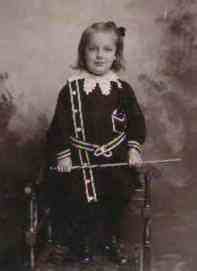
Figure 6.--This photograph was taken in New York City at about the turn of the century. The child looks to be wearing a boy dress, prominent belts often denote a boy. The hairbow and hair seem girlish. The cane and pose seem boyish. A HBC reader believes the child is a boy. She wites, "I have seen many boys dressed exactly like this." -- BM
|
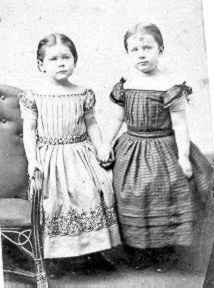
Figure 7.--These two cousins, probably in the 1860s are possiblky early 70s, are apparently girls, but the child on the right does look like a boy. A HBC reader writes, "Again this is a portrait from the 1860s. I believe both children are girls." -- BM
|

Figure 8.--This American image is probably a boy. The sailor tunic he wears was a popular boys' outfit. Girls also wore them, but not so commonly and usually not with such long knickers and heavy shoes. The hair bow seems rather large for a boy, but the tunic have a boyish belt and buttons on the right.
|

Figure 9.--This American image is probably a girl, although I have my doubts. The buttons, outfit (except the collar) suggest a boy. The outfit seems rather like a boys' kilt suit, especially the front buttons suggest a boy. The collar, necklace, and hair seem to be a girlish.
|
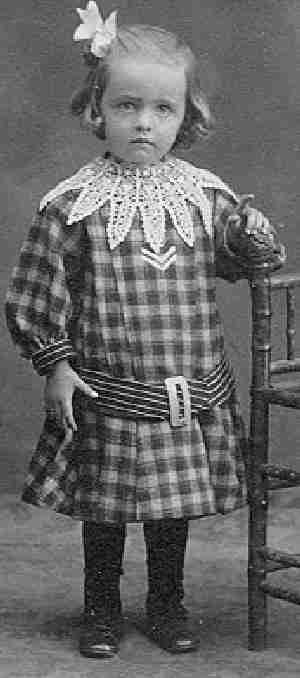
Figure 10.--While most would say that this child is definitely a girl, HBC is not so convinced. The tunic outfit has no girlish touches except the lace collar, which of course many boys wore. There is also a prominentbelt. Thus it definitely could be a boy. Click on the image for a fuller discussdion.
|
HBC

Navigate the Historic Boys' Clothing Web Site:
[Return to the Main difficult gender page]
[Introduction]
[Activities]
[Biographies]
[Chronology]
[Clothing styles]
[Countries]
[Gender]
[Girls]
[Bibliographies]
[Contributions]
[FAQs]
[Glossary]
[Links]
[Satellite sites]
[Tools]
[Boys' Clothing Home]
Created: November 15, 1998
Last updated: June 18, 2003











